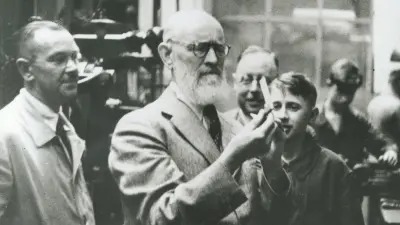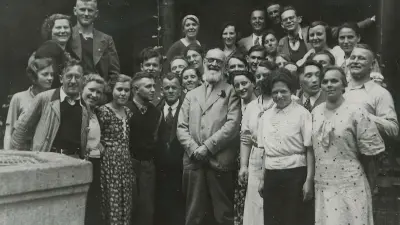“I would rather lose money than trust.”
Corporate principles

Robert Bosch had a very precise idea of the principles and values he wished the company to uphold.
Customer service

Excellent customer service was already important to him as a young entrepreneur. This included ensuring customers could be visited quickly at their premises. To achieve this, he procured a cutting-edge low-wheeler bicycle. Robert Bosch also ensured his customers could reach him easily by installing one of the first telephones in Stuttgart.
Quality
Quality was also one of Robert Bosch’s top priorities. Adolf Krauss, an employee at the company since 1898, recalled on the occasion of his 25th anniversary there: “Everyone’s work was […] scrutinized closely for effort and precision. No botching or bungling was tolerated in the Bosch workshop.”
Good tools, sound raw materials, and smooth manufacturing processes were required in order to produce high quality. This was the only way to guarantee all goods left the Bosch factory in flawless condition. Continuous improvements to both machinery and work processes were essential.
Human resource development
But meticulous work also called for well trained associates. For this reason, Robert Bosch established his own apprentice workshop in 1913, to train young people in all fields of work.
“I have always acted according to the principle that ‘I would rather lose money than trust.’ The integrity of my promises, the belief in the value of my products and in my word of honor have always had a higher priority to me than a transitory profit.”
Supplement

Supplement 1: Robert Bosch — His life and work








